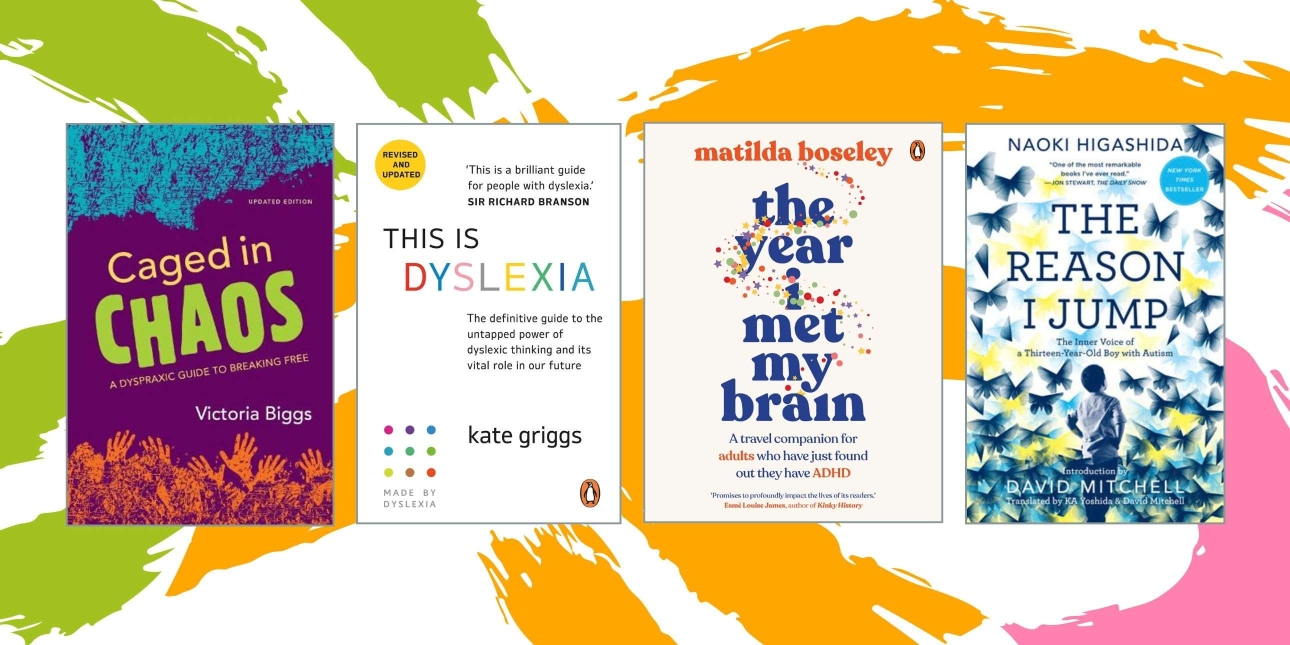Four excellent books about ADHD, autism, dyslexia, and dyspraxia
To mark Neurodiversity Celebration Week, here’s four excellent books for different brains – offering personal insights, compassion, and tips.
Neurodiversity Celebration Week takes place from the 17-23 March. Founded when she was just 16 by Siena Castellon, who has autism, dyslexia, dyspraxia and ADHD, this global initiative encourages schools and organisations to celebrate neurodiversity – while challenging the many stereotypes and misconceptions surrounding it.
Given that 20% of us are neurodivergent (including this author, with an adult diagnosis in my mid-50s of “moderate to severe” combined ADHD), there’s every chance you’ll know someone who is neurodivergent, or indeed, are neurodivergent yourself.
So, whether you’re navigating life with a ‘neurospicy’ brain, suspect you might have one – or wanting to understand more about your differently minded friends, family or loved ones, here’s some recommended reading stuff.
ADHD
The Year I Met My Brain by Matilda Boseley
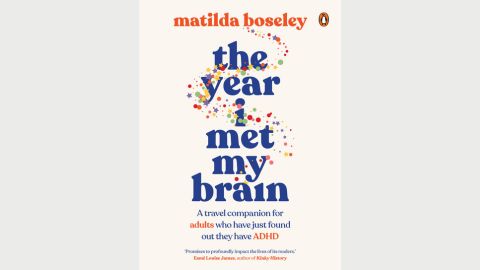
What a lovely book this is: compassionate, practical – and deeply relatable for those of us who have this complex ‘superpower’ / pain in the arm. Billed as a “travel companion for adults who have just found out they have ADHD,” Boseley (who shares her own journey to diagnosis) busts some outdated myths – including the persistent stereotype that ADHD only affects hyperactive boys, dives into the realities of the condition, and highlights some of its grimmer co-morbidities (think of them as unwanted DVD extras) such as addiction, anxiety and depression. But also reveals some of the upsides of a built-in impulsive nature. It also reveals just how many grownups remain undiagnosed, struggling on without the understanding (including their own) or support they need.
(Also useful: Kat Brown’s It’s Not A Bloody Trend – a bluntly funny and similarly useful guide to navigating this particular brain difference, using case studies and science. And not forgetting (admittedly hard, with ADHD), Dr Gabor Maté’s bestselling Scattered Minds – another resource for adults in managing its more challenging symptoms, drawing on the author’s own midlife ADHD diagnosis and extensive career in addiction, stress, and mental illness.)
The Year I Met My Brain is published by Penguin in Australia and you can buy it in the UK from Amazon.
AUTISM
The Reason I Jump: The Inner Voice of a Thirteen-Year-Old Boy with Autism by Naoki Higashida, K.A. Yoshida (Translator David Mitchell)
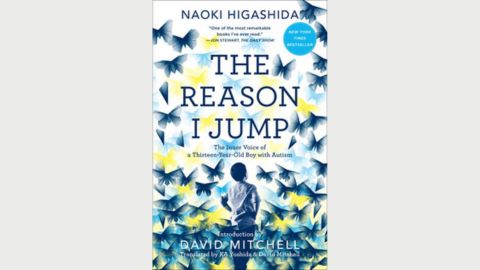
Written by Naoki Higashida, a 13-year-old boy with autism, this profound and deeply moving memoir invites readers to experience the world through an autistic person’s viewpoint. Using an alphabet grid to construct his words, sentences, and thoughts, Higashida demonstrates how he thinks, feels, perceives, and responds to the world in ways neurotypicals can’t fully comprehend. For parents and family members who’ve long struggled to understand their autistic loved ones, it’s an invaluable opportunity to connect with their complex, subtle, and curious inner life.
(Also of note: the graphic novel Camouflage: The Hidden Lives of Autistic Women by Dr Sarah Bargiela, which serves to underline the point that many autistic women are overlooked during early diagnoses due to the persistent bias that autism is a “male condition.” This one shines a light on the experiences of women who are diagnosed later in life. As for that latter-day classic The Curious Incident of the Dog in the Night-Time, interestingly, author Mark Haddon was publicly playing down any of its overt connections to autism as early as 2009, when he began stating the book was about “difference” rather than disability. Many will take that too.)
The Reason I Jump is published by Penguin Random House in the USA. Purchase in the UK via Amazon.
DYSLEXIA
This is Dyslexia by Kate Griggs
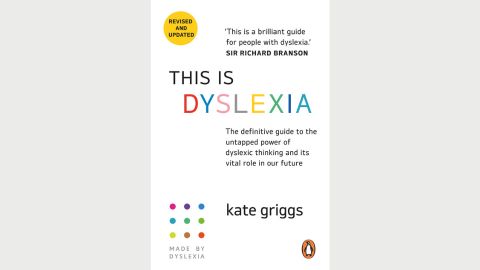
Kicking off with an introduction from Sir Richard Branson, emphasising the need for dyslexic thinking in the post-pandemic world, here’s an insightful and empowering exploration of the condition from a dyslexia advocate and founder of the charity “Made by Dyslexia. Its aim is to shift the narrative from a perceived weakness to a hidden superpower – and it’s written with dyslexic readers in mind, so includes engaging elements such as customised fonts, QR codes linking to videos, and relatable, simple content that breaks down complex concepts. Parts Two and Three delve into the strengths of dyslexia, highlighting brilliant dyslexic minds, Part Four is particularly good for parents, providing guidance on understanding and communicating with dyslexic children.
(Also handy: Dyslexia: How to Survive and Succeed at Work by Sylvia Moody – as it suggests on the tin, another practical guide designed to empower individuals with dyslexia in the workplace. And The Dyslexic Edge by Jamie Waller, which challenges the idea that dyslexia’s a hindrance, instead presenting it as, you guessed it, a superpower. Includes stories of successful dyslexics including Steve Jobs and the aforementioned Virgin boss.)
This is Dyslexia is published by Penguin
DYSPRAXIA
Caged in Chaos by Victoria Biggs
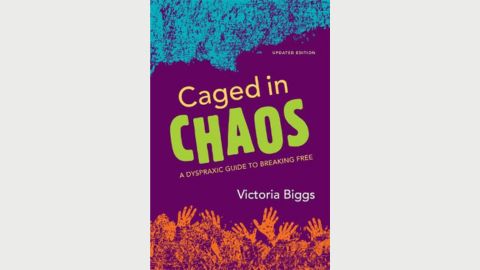
A candid and insightful award-winning account of living with dyspraxia, written when Biggs was 16. In an empathetic, funny and conversational style, it delves into the physical, social, and psychological challenges of developmental coordination disorder (DCD), including issues such as poor coordination, memory, and self-esteem struggles. Biggs provides practical advice on everyday topics such as body language, social skills, health, hygiene, puberty, and family life. The book also features personal stories from other young dyspraxics, offering validation and understanding. It’s a valuable resource for dyspraxic individuals, their families and teachers.
(Also handy: Living with Dyspraxia: A Guide for Adults with Developmental Dyspraxia by Mary Colley – practical advice, helping dyspraxic adults navigate everyday challenges such as cooking and shopping, while also providing tips on work, study, social relationships, and self-care. It also highlights dyspraxia’s typical interactions with other conditions such as ADHD and dyslexia.)
Caged in Chaos is published by Jessica Kingsley Publishing

Ali Catterall is an award-winning writer, journalist and filmmaker whose writing has featured in the Guardian, Time Out, GQ, Film4, Word magazine and the Big Issue, among many others. Ali is also the writer and director of the 2023 film Scala!!!

